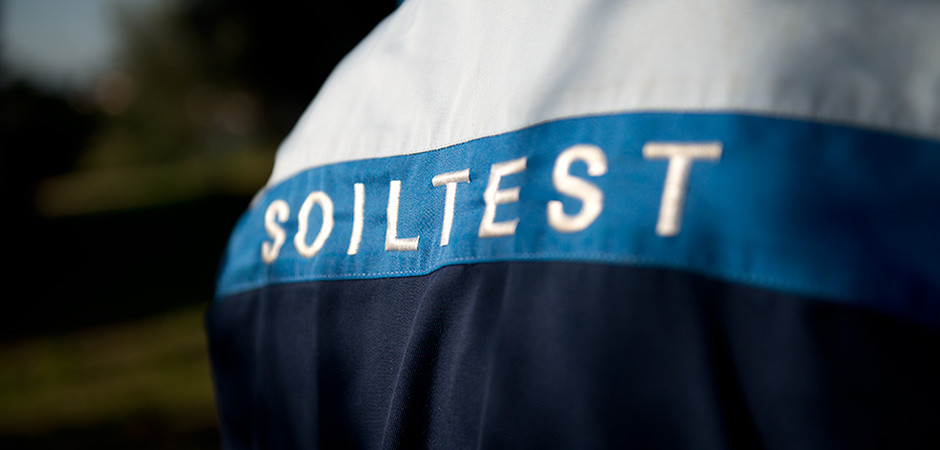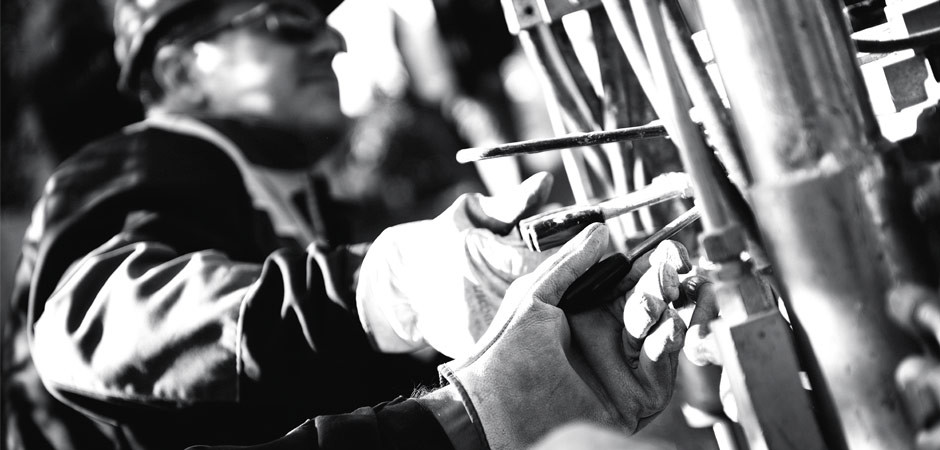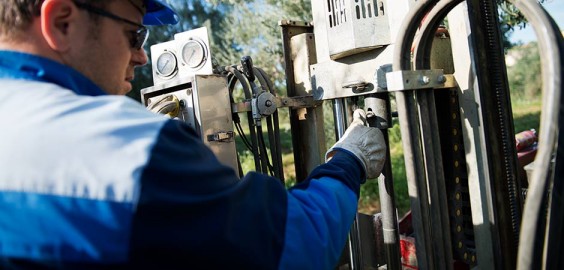Geophysics
SOILTEST offers a wide selection of surface geophysical techniques that involve the measurement and interpretation of physical properties of the earth in order to be able to determine subsurface conditions for engineering, geotechnical and environmental investigations.
Applications of these techniques are numerous and can be applied on scales ranging from geological variations through to structural investigations within buildings.
We have many years of experience and expertise in the acquisition, processing and interpretation of a wide variety of geophysical techniques, including Ground Probing Radar, Magnetic Surveying, Electromagnetic Methods, Resistivity Surveying, MASW, Seismic Reflection and Refraction techniques, and Gravity and Microgravity Surveys.
The seismic methods allow us to reconstruct model subsurface and to obtain useful parameters in the design, including the Vs30, elasto-dynamic modules, land and structures frequency vibration and the liquefaction potential.
The electrical methods allow us to:
- reconstruction subsoil model,
- identify the presence of water,
- monitoring the marine ingression into the ground,
- check the integrity of tarpaulins in landfills,
- detect the presence of underground cavities,
- identify man-made structures or buried waste,
- characterize the landslide,
- supporting studied soil.
Seismic reflection
SOILTEST performs investigations of high-resolution seismic reflection and high depth seismic reflection for oil exploration.
The high-resolution seismic reflection has as fields of application civil engineering (identification of landslides, detection of fractured zones, reconstruction r subsoil model) Environmental Studies (search for aquifers), etc.
The high depth seismic reflection allows us to identify hydrocarbon reservoirs through the reconstruction of the stratigraphic and structural geological bodies (depositional geometries, stratification, unconformity surfaces, faults, thrust faults).
Seismic Refraction
As part of the seismic surveys we perform the 2D seismic refraction to know the thickness and geometry of the subsoil, seismic velocity of the layers, the elastic-dynamic modules, index of fracturing of rocks, reconstruct the substrate geometry, testing the stability of slopes and the reconstruction of sliding surfaces.
MASW
MASW (Multichannel Analysis Surface Waves) method is a non invasive technique that is based on the registration of Rayleigh surface waves through the use of sensors placed on the surface.
Rayleigh waves in a layered medium, are dispersive, infact waves with different wavelengths propagate with different phase velocity and group velocity. Once complete the picking on the spectrum fK or on dispersion curve obtained from field data, through the processes of inversion, it is possible obtain the velocity profile with depth that allows us to define the category of foundation soil by calculating the VS30.
HVSR
HVSR technique (Horizzontal to Vertical Spectral Rario or method of Nakamura) permits evaluation of the fundamental resonance frequency of lands and buildings that is to evaluate some characteristics of sedimentary deposits (soils); this technique is very economical, both as regards the recordings in the site, that as regards the analysis which the data are submitted. It is a non invasive technique that appropriately calibrated by means of inversion processes used to define the category of foundation soil.
When you consider the geological structure typical of a sedimentary deposit, it is possible to see how the tremor recorded at the surface can be regarded as composed of surface waves and body waves. These waves will be modified by the filtering of the soft layer. It is possible define two spectra relating to the measures of motion horizontal surface (Hf) and vertical (Vf); these spectra are related to the spectra of the waves of volume and surface area than those of the following formulas:
H f = A h x H b + H s
V f = A v x V b + V s
where Ah and Av are the amplification factors of the horizontal and vertical motion of the waves of volume, Hb and Vb are the spectra of the horizontal and vertical motion in bedrock and Hs and Vs are the spectra of the horizontal and vertical motion of surface waves.
RE.MI.
ReMi analysis (Refraction Microtremor) is a method of passive seismic.
ReMi (Refraction Microtremor) analysis is a passive seismic methods which are to record microtremors due to natural sources (wind, sea, human activity), by disposition of multi-geofonichs.
During the analysis are determineted velocity spectra for various time windows of the recording of which choose the more clear for the identification of the dispersion curve to reverse in similar mode to the analysis MASW however, contrary to the latter , is a method chosen for investigation in areas that are particularly noisy.
From this information it is possible to obtain the velocity profiles with depth and characterization of the subsurface even with the aid of geological surveys and seismic profiles in boreholes or refraction. When this technique is combined with the seismic refraction, it can also view the reverse velocity, which can’t be obtained from seismic refraction.
Down Hole
Downhole method allows to determine the velocity of the compression waves (P) and shear (SH) at various depths (up to 100 m.), for determination Vs30 parameter, Young’s modulus, ratio of Poisson, Shear Modulus (G). For the survey is necessary to provide a hole in which to place suitably equipped receivers being recorded.
The method is often used for studies of seismic micro-zoning.
Seismics Crosshole
Seismics Crosshole tests are performed on soil and rock sites to measure in-place shear and compression wave velocity profiles of the soil and rock versus depth.
Using these measurements, calculations can then be made of the dynamic soil and rock properties for earthquake design analyses for structures, liquefaction potential studies, site development and dynamic machine foundation designs. The parameters that can be determined include Poisson’s ratios as well as shear and Young’s moduli. In addition, the material damping can be estimated from CH test results.
Crosshole seismic surveying methods are being used increasingly in geotechnical investigations to evaluate dynamic properties of soils and rocks when earthquake effects on structures have to be considered. The seismic crosshole method provides a designer with information pertinent to the seismic wave velocities of the materials in question. This data may be used as input into static/dynamic analyses, as a means for computing shear modulus, Young’modulus, and Poisson’ratio, or simply for the determination of anomalies that might exist between boreholes. An important enhancement to seismic refection is the tomographic inversion of first-arrival times obtained from surface seismic profiles or recordings between boreholes to form 2-D and 3-D velocity (and/or attenuation) images.
Tomography
Tomography data collection involves multiple combinations of source and receiver depth locations. Typically, this is achieved with a vertical string of multiple receivers of between 10-24 hydrophones suspended in water in the borehole while a source is systematically moved up the opposite borehole from bottom to top until all possible source-receiver combinations are recorded. Common Applications include: rock rippability , image voids, solution caverns, washouts, locate faults, fractures, detect water bearing zones, vertically profile stratigraphic layers, determine load bearing capacity, soil elastic moduli (Shear, Young’s, Poisson’s ratio), surface seismic survey velocity calibration, determine depth of piers/pilings.
Applications include: rock rippability , image voids, solution caverns, washouts, locate faults, fractures, detect water bearing zones, vertically profile stratigraphic layers, determine load bearing capacity, soil elastic moduli (Shear, Young’s, Poisson’s ratio), surface seismic survey velocity calibration, determine depth of piers/pilings.
Up-Hole
Up-Hole test provides the use of a spring energizing inside the hole and sensors on the surface. The sensors are constituted by a triplet of geophones, one for the compression waves and two for shear wawes. In this methodology are often placed the geophones on the surface so as to obtain information also in the horizontal direction particularly suitable for the study of flood plains.
Parallel Seismic Testing
Parallel Seismic Testing is a test hole in which is used to estimate the depth of the foundations (superficial or deep). The test consists of comparing the measurement of the velocity that a seismic wave takes in crossing the foundation (DHM) with the measurement of the velocity that the wave takes in crossing the natural terrain (DHT).
VSP
VSP methodology is used for reconstructing the geometry of the ground: data obtained from the execution of a test down-hole are used by the detection of the presence of reflected signals produced by discontinuity, located at depths greater than those of the bottom hole.
Geoelectric
Geoelectric Prospecting of resistivity study the disturbances that an electric field undergoes due to the anisotropy in the subsurface. They are detected at the surface by measures of potential difference. SOILTEST perform vertical electrical soundings (SEV) and horizontal electrical soundings (SEO) through conventional electrode configurations.
Electrical tomography
Electrical tomography is a modern geophysical survey methodology that allows, with the help of special software, the return of two-dimensional representations and three-dimensional high-resolution of the electrical characteristics of the subsoil.
Depending on the electrode configuration used can be performed:
- Electrical Tomografhy 2D with rectilinear trend of the stringing to obtain a profile of the electro-resistive subsoil.
- Electric tomography 3D that allows to analyze the volumes of subsoil between the electrodes arranged following not conventional stringing with electrode arrangements that fit really the available spaces.
Electrical Cross-Hole
It allows to obtain similar results but with a higher resolution than the electrical tomography 3D surface: it is possible to analyze volumes of land between more boreholes within which electrodes are placed particular hole.
Induced Polarization
Induced polarization actually applied simultaneously to the method of electrical tomography of resistivity and is used in the geological and enviromental field. The induced polarization method reliably detects disseminated sulphides often associated with economic base metal and gold deposits. The method is also used for geological mapping and groundwater studies.
- Mineral exploration – detection of ore bodies by their resistivity and/or IP anomalies. SOILTEST also performs Downhole IP surveys in addition to standard surface methods.
- Groundwater investigation – aquifers can be detected as resistivity anomalies.
- Stratigraphy mapping – differing soil and/or rock types may have different inherent resistivity.
- Geotechnical – soil or rock resistivity is important in many geotechnical projects.
- Environmental – IP methods can assist in the assessment of the acid generating potential of waste rock and tailings from mine operations. Resistivity can be used to map contamination plumes.
Advantages: a variety of electrode configurations can be utilized including gradient array (for rapid, economical coverage, dipole-dipole array (for depth discrimination), and pole-dipole arrays (for better signal strength). To increase signal strength at greater n values, hybrid pole-dipole arrays are used and multiple receivers are used to efficiently acquire the high data density required for robust 3D inversions. Resistivity and IP data can be collected simultaneously using the same instrumentation. Resistivity is equally effective at detecting resistive or conductive targets. IP may be used for mineral discrimination. A multitude of configurations are available depending on the survey target…
Spontaneus Potential
Spontaneus Potential analyzes the variation of the electric potential in the basement and allows to search mineralization in the rocky bodies, identification of fracture zones and faults, geothermal research, perimeter groundwater, assessment of the preferred direction of flow and logs hole.
Ground Penetration Radar (GPR)
Ground Penetration Radar is a electromagnetic technique non-destructive high-resolution that allows to identify the location of a target (reflector) at different electrical permeability in the subsoil. GPR allows to identify and demarcate areas of landfill buried, lateral variations of the substrate, iron drums, empty, pipes (iron PVC and concrete), mapping of underground services and man-made structures and studies for the characterization and assessment of the state conservation of artifacts.
Ultrasonic Testing
Ultrasonic testing allows the estimation of the strength of the hardened concrete. Depending on the velocity of propagation of ultrasound, you get an evaluation of the uniformity of the concrete, outlining the areas of degradation or of poor quality. This type of non-destructive testing, non-invasive and rapid execution, allows to obtain an overall evaluation on the characteristics of the materials investigated, from the concrete to the building structures. The tests consist in measuring the velocity of propagation of longitudinal waves, through the concrete, which are in relation with the integrity of the material and its mechanical parameters.
Longitudinal waves, through the concrete, which are in relation with the integrity of the material and its mechanical parameters.












